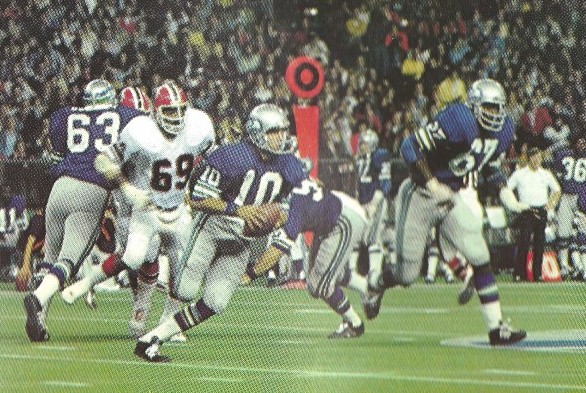
Thirty-five years ago this week (Sept. 12, 1976), the Seattle Seahawks played the first of their 549 (and counting) National Football League regular-season games. Rather than dampen the enthusiasm of the 58,441 (2,700 no-shows) fans in attendance, some of whom had been pining for a pro football franchise since the mid-1950s, Seattles 30-24 loss to the St. Louis Cardinals in the Kingdome that Sunday afternoon only served to whet expectations.
The expansion Seahawks trailed 23-3 late in the third quarter, but provoked a spark of excitement as the period came to a close when 22-year-old free-agent quarterback Jim Zorn threw a 15-yard touchdown pass to Minnesota Vikings castoff Sam McCullum, the first touchdown in franchise history.
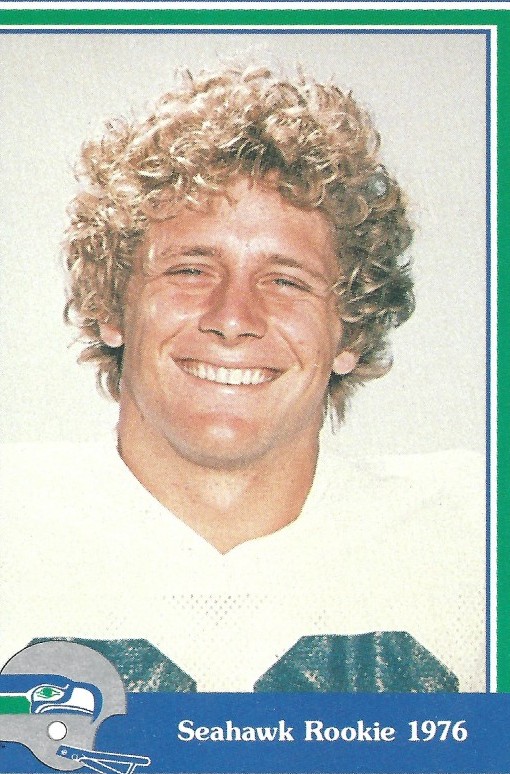
But as soon as the fourth quarter commenced, St. Louis answered with a one-yard touchdown run by Jim Otis, extending the Cardinals lead to 30-10, a development that elicited the first boos in the Seahawks nascent history.
It took Zorn only seven minutes of clock time to become the most popular man in town. First, he unleashed a 72-yard scoring bomb to McCullum, melting the St. Louis lead to 30-17. A few minutes later, after the Seahawks held the Cardinals on downs, Zorn scrambled eight yards for a touchdown, bringing Seattle to within 30-24.
On the St. Louis sidelines, Cardinals head coach Don Coryell, a one-time University of Washington defensive back, and a Lincoln High School graduate, paced frantically. Coryells so-called Cardiac Cardinals had won the NFC East the previous season, were expected to repeat, and had entered the game as a 10-point favorite.
Ten Seahawks players had joined the team just that week. Five had practiced with the club only twice. Zorn couldnt even remember the names of all of his receivers.
That (Seattles rally) wasnt supposed to happen, Coryell told reporters after the Seahawks had practically erased a 20-point deficit in the fourth quarter. They (the Seahawks) were better prepared than we expected.
Coryell and the Cardinals nearly left the building in humiliation. The Seahawks twice more kept St. Louis out of scoring range and, with four seconds to play, had the ball on the Cardinals 43-yard line. Zorn uncorked a Hail Mary, and McCullum might have latched on to a game-winning catch except that Mike Sensibaugh interceded with his second interception of the day, right at the goal line.
The people are excitable, Coryell said of the Kingdome throng. They clap and holler. I think youve got a very good thing going here.
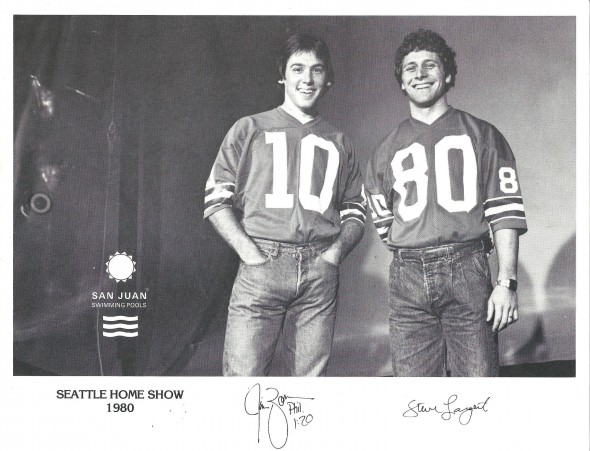
These are fantastic fans, said Seahawks OT Norm Evans, who had played on Miamis 17-0 team in 1972. I thought we had great fans in Miami, but theyre nothing compared to these people. They appreciate us giving a good effort.
Seahawks fans evacuated the Kingdome and fanned throughout Pioneer Square reeling alternately in dismay and delight — dismay over the defeat, delight at the fact that pro football had not only arrived in Seattle, but that it had done so with such goose-bump theatrics, a near upset over a defending division champion.
Even better, the Seahawks seemed to have achieved, over the space of 60 football minutes, their oft-repeated goal of building a model franchise, one they had deliberately patterned after the hugely successful Dallas Cowboys.
That process dated to more than four years before Zorn transformed himself into a local icon and the Seahawks into the flavor of the year. On June 15, 1972, Seattle Professional Football Inc., a group of business and community leaders headed by Herman Sarkowsky, announced its intention to secure an NFL franchise.
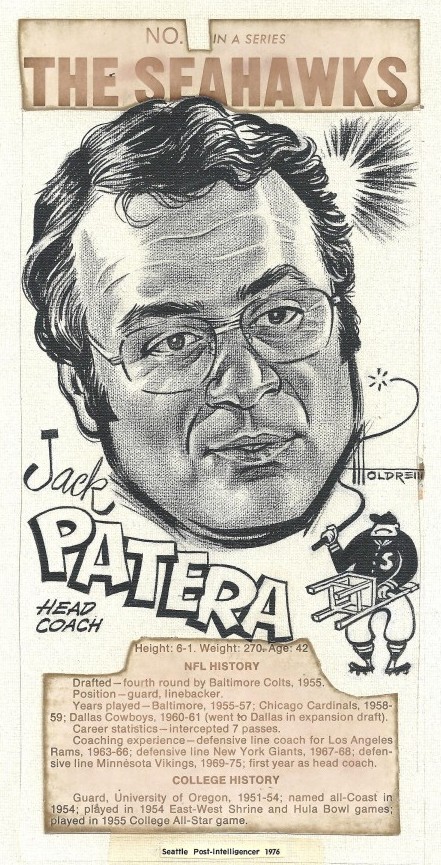
It is our opinion, Sarkowsky said at the time, that the composition of Seattle Professional Football is in line with Commissioner Pete Rozelles, and the leagues preference for local ownership of its franchises.
Best intelligence at the time had it that if and when Seattle ever received a pro football franchise, it would be awarded to a group headed by Minneapolis tycoon Wayne Field, whose pursuit of a team had the benefit of featuring the face of Hugh McElhenny, a former star at the University of Washington (1949-51) and a recent (1970) inductee into the Pro Football Hall of Fame.
Field and McElhenny had chased a franchise for 18 months. They established offices near the site where the Kingdome would be constructed, registered a team name the Seattle Kings (see Hugh McElhenny and the Kings, published on March 22) and gone so far as to have uniforms designed by NFL Properties, the leagues marketing arm.
Field-McElhenny received loads of publicity in the local media as their pursuit of a team developed, and they had spent a considerable sum of Field’s money lobbying NFL owners about the virtues of a Seattle franchise.
Despite McElhennys fame, local connections and status within the NFL, Fields-McElhenny had two major strikes against it. First, Field lived in Minnesota and Rozelle desired that the primary owner of a Seattle franchise reside in the new franchise city. Second, Field had relatively limited resources certainly enough to indulge almost every whim — except own and operate an NFL franchise.
As the cost of purchasing an expansion team escalated, from $6 million, to $8 million and then to $12 million, Field-McElhenny increasingly found themselves priced out of the game.
On the other hand, Seattle Professional Football Inc. met Rozelles qualification standards perfectly: 100 percent local ownership, each member a community pillar, and no lack of funds.
On June 4, 1974, the NFL awarded Seattle a franchise for the 1976 season without disclosing whether it would be owned by Field-McElhenny or Seattle Professional Football Inc.
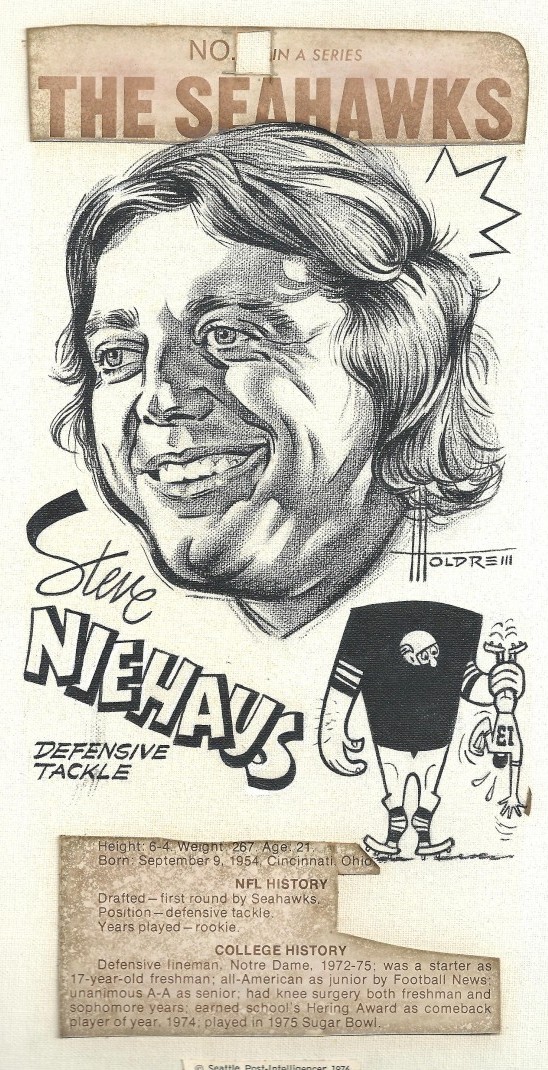
Six months later (Dec. 5, 1974), the NFL disclosed the winner, Seattle Professional Football Inc., headed by Lloyd W. Nordstrom (representing the Nordstrom retail chain) in partnership with Sarkowsky, Ned Skinner, Howard S. Wright, M. Lamont Bean and Lynn Himmelman. Franchise cost: $16 million, more than double what Field-McElhenny ever had in mind and a sum out of their league.
Over the next year (1975), Sarkowsky assembled Seattles front office, principally hiring John Thompson, executive director of the NFLs Management Council and a former University of Washington public relations employee, as general manager.
The franchise received the nickname Seahawks on June 17, 1975 (selected over Aleuts, Zodiacs, even Asparagus, among others) and mailed out season-ticket applications on July 25, 1975.
The team sold 24,168 the first day and reached 59,000 on Aug. 23. Three months later (Nov. 24, 1975), the Seahawks signed their first player, ex-Husky standout Dave Williams.
The Seahawks signed one other player, former UW punter Skip Boyd, before making the seminal inking in franchise history, that of free agent quarterback Zorn, who had been recruited by no college coming out of high school (he got a brief sniff from Wake Forest) and by no pro team coming out of college (Cal Poly-Pomona by way of Cerritos Junior College).
When Zorn joined the Seahawks, he had all of one quarter of pro experience, that with the 1975 Dallas Cowboys in the fourth quarter of an exhibition game against the Oakland Raiders (with Zorn playing for Dallas and Ken Stabler and David Humm running the Raiders, this may have been the only game in NFL history to feature three left-handed quarterbacks).
Zorn piqued Seattles attention through Dick Mansperger, whom the Seahawks poached from the Cowboys to serve as their director of player personnel. Mansperger recalled Zorn for the 80-yard touchdown drive he had orchestrated for the Cowboys in that exhibition game against Oakland, and as the last cut from Dallas 1975 roster (Zorn became expendable when the Cowboys signed free agent running Preston Pearson, a Steelers castoff).
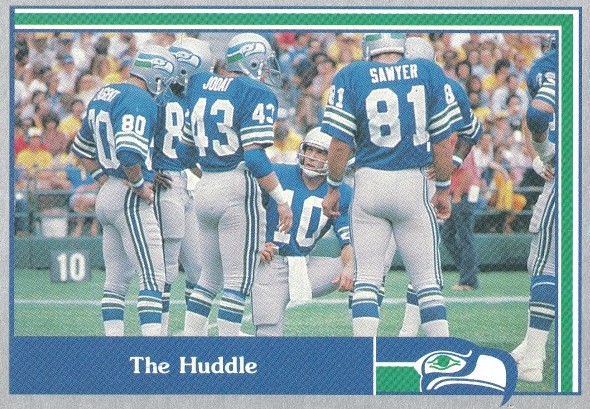
Had Pearson been unavailable, Zorn would have been a Cowboy in 1975 and perhaps beyond, backing up Roger Staubach and Clint Longley. Had the Los Angeles Rams not reneged on their offer of a tryout, Zorn might have played with them. Had Mansperger not been lured from Dallas to Seattle, Zorn might never had reached the NFL, and certainly not with the Seahawks.
The Seahawks signed Zorn on Jan. 8, 1976, five days after they had named Minnesota Vikings assistant Jack Patera as the teams first head coach.
At first Patera seemed an odd fit for a franchise bent on practicing perfect public relations. While he certainly had the necessary football acumen he had played for the Colts, Cardinals and Cowboys and coached with the Rams, Giants and Vikings he presented himself as aloof and overbearing.
Patera also demonstrated substantial scorn for the media. When he glowered at reporters, his eyes bulged in the manner of Ralph Kramdens ire over another of Ed Nortons inanities. Patera once cut a linebacker, Peter Cronan, immediately after Patera spotted a reporter interviewing him.
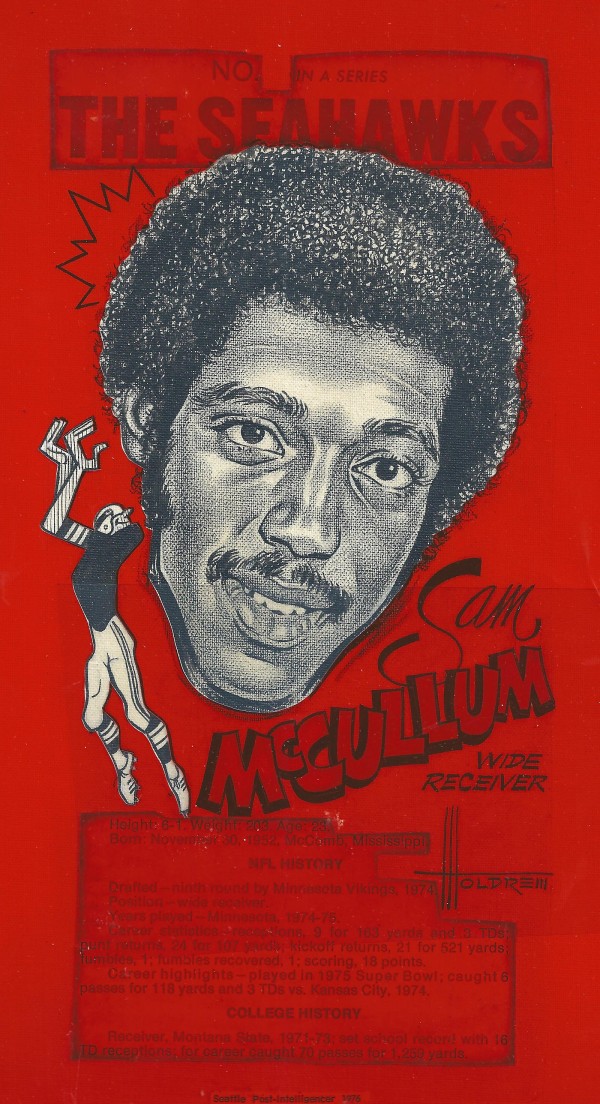
But Patera knew how to motivate his players and make them perform (he became far more innovative offensively than anyone imagined), even beyond everyones expectations, although no one had many expectations for the 1976 Seahawks or their expansion counterparts, the Tampa Bay Buccaneers, for good reason.
Both franchises had been stocked with players made available in the NFL veterans allocation draft, held on March 30, 1976, in New York City.
The Seahawks received 39 players via this process, the vast majority on their last legs or young players not equipped, or not yet ready, to make an established NFL roster.
Of the 39, 13 became full or part-time starters in 1976, most notably McCullum, TE Ron Howard, LB Mike Curtis, OT Nick Bebout and CB Dave Brown.
McCallum served as a starting receiver until the 1982 NFL strike, and might have remained with the team far beyond that if the Seahawks hadnt released him in mid-strike for his union activities.
Evans, Seattles captain from 1976-78, and Howard each spent three years with the Seahawks after the draft, and Bebout played four seasons. Brown spent 11 years in a Seattle uniform (1976-86), making 159 starts.
Following the vets draft, Seattle and Tampa Bay received 25 players each in the April 8-9 college draft. The Seahawks waited until 15 seconds remained on the clock before taking Notre Dame defensive lineman Steve Niehaus over flashy and powerful — California running back Chuck Muncie.
The Seahawks then, and for some years afterward, believed they needed foundation pieces in place (namely linemen) before adding top-flight skill players.
Niehaus, whom Patera predicted would serve as one of those foundation pieces for 10 years, had a decent rookie campaign (NFL Defensive Rookie of the Year), but sustained enough injuries that the Seahawks parted ways with him in 1979.
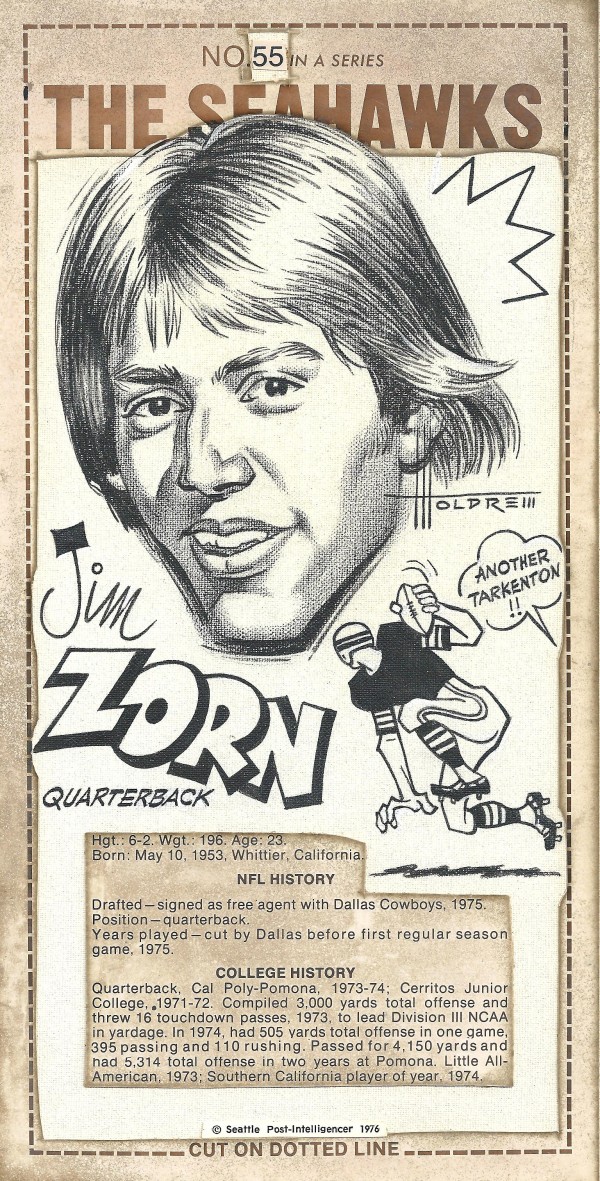
Only two of the 25 original draft choices had long connections with the franchise, running back Sherman Smith and receiver Steve Raible.
Smith led the Seahawks in rushing for the first four years of their existence, and rejoined the Seahawks last year as running backs coach, now in his 17th season as an NFL coach. Raible, a dependable receiver through 1981, wound up having an almost-lifetime affiliation with the club as one of its broadcasters.
Two footnotes to the 1976 Seahawks: One of the best players on their preseason roster never made it to the regular season, that because receiver Ahmad Rashad forced a trade to Minnesota following a dispute with the front office.
Neil Graff, acquired from New England in the vets draft after the Patriots determined he had chance to unseat Jim Plunkett, could have become Seattles starting quarterback.
Patera gave Graff a chance to take the job in the teams first preseason game on Aug. 1, 1976, against San Francisco in the Kingdome. But Graff couldnt deliver.
Zorn entered the game and rallied the Seahawks from a 24-0 deficit and nearly scored the tying touchdown, but was tackled on the San Francisco two-yard line when the gun sounded, ending a 27-20 Seahawks loss. End of Graff (he played in just four NFL games, all with Pittsburgh, following his release).
From that moment on, and until Dave Krieg supplanted him, Zorn ran the show through what proved to be a more difficult building process than anyone imagined.
Still, and in his early years, fans loved Zorns style, a sort of a poor-mans, left-handed version of Fran Tarkenton, and they loved his lack of pretense and ability to make something happen out of nothing, on the field and off.
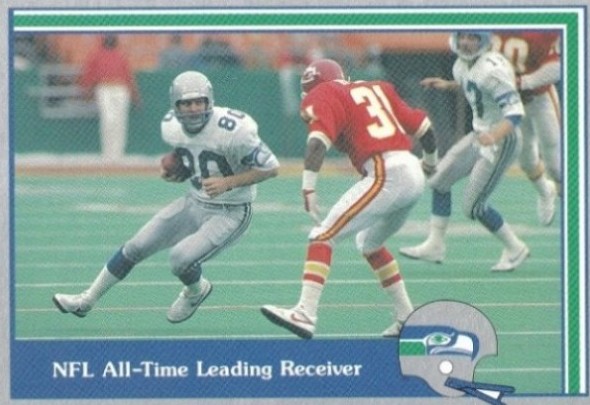
Newspapers of the day seized on the fact that when Zorn arrived in Seattle, he had so little money that he supplemented his part-time public relations work for the front office by wielding a jackhammer during construction of the teams new practice digs in Kirkland.
For all of the public gaga over Zorn, he did not become the complete package until after Aug. 26, 1976, when the Seahawks, in need of receiving help, sent an eighth-round draft choice to the Houston Oilers, receiving in return smallish (5-11, 198 pounds) Steve Largent.
Largent come to Seattles attention at the recommendation of offensive coordinator Jerry Rhome, who had in common with Largent the fact that they both graduated from Tulsa University.
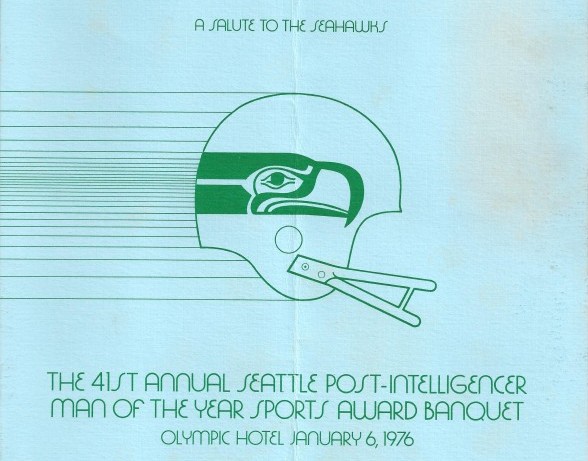
Never have the Seahawks gotten so much after giving so little. The Oilers used that eighth-round pick on WR Steve Davis of Georgia, who never played in an NFL game.
Largent played in 200 games for the Seahawks (197 starts) and retired (1989) as the leagues all-time leader in receptions, receiving yards and touchdown catches, marks ultimately broken by Jerry Rice. Largent entered the Pro Football Hall of Fame in 1995, still the only Seahawks player to do so.
It might have been the dumbest move Ive ever made, former Oilers coach Bum Phillips famously said at about the mid-point of Largents career.
Popular as they were, and as good as Largent was, the 1976 Seahawks played to expansion form after their miss against Coryells Cardinals. They scored 229 points (21st of 28) in 14 games, but allowed 429 (28th of 28), finishing 2-12 and last in the NFC West.
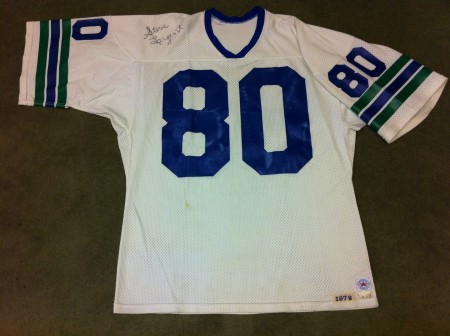
Seattles first victory, 13-10 over Tampa Bay in the Expansion Bowl,” came in Week 6 and featured 35 combined penalties, two shy of the NFL record set by Cleveland and Chicago in 1951.
The Seahawks also defeated Atlanta 30-13 in the Kingdome in Week 9 as Sherman Smith scored on a 21-yard pass from Zorn and ran 53 yards for a touchdown.
Otherwise, the Seahawks, whose offensive linemen averaged just 252 pounds (the Seattle offensive line that played in Super Bowl XL averaged nearly 300), mostly got drubbed weekly, including 45-6 by the Rams, 51-27 by the Saints and 34-7 by the Bears (Walter Payton rushed for 183 yards in two and a half quarters).
Zorn earned MVP honors on the 1976 team, despite throwing 27 interceptions against 12 touchdown passes and producing a 49.4 passer rating a number that would earn him a ticket out of town today. But neither Zorns numbers nor the Seahawks record mattered a whit. For that inaugural year, Zorn, Largent and the Seahawks owned the town.
We only won two games that first year, Zorn, later the Seahawks quarterback coach, told reporter Clare Farnsworth. But you would have thought we almost went to the playoffs. Thats how enthusiastic not only we were, but the fans were. Everybody was excited.
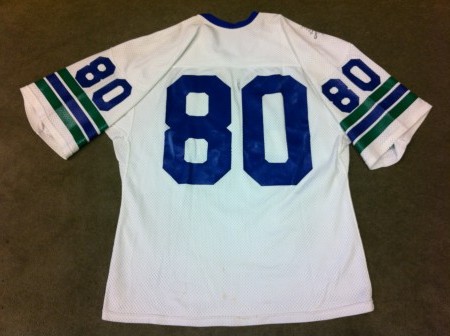
Then NFL reality took over. Of the Seahawks original 43-man roster, 29 players, including eight starters, did not make it to a second training camp with Seattle. Two, Largent and Brown, eventually made the Seahawks’ Ring of Honor, and both received acknowledgment on Seattle’s 35th anniversary team.
On the other hand, a dozen other 1976 Seahawks were out of football by 1980.
That total included Al Cowlings, a defensive end who played one game for the inaugural Seahawks and gained far greater notoriety 18 years later as the driver of O.J. Simpsons white Ford Bronco.
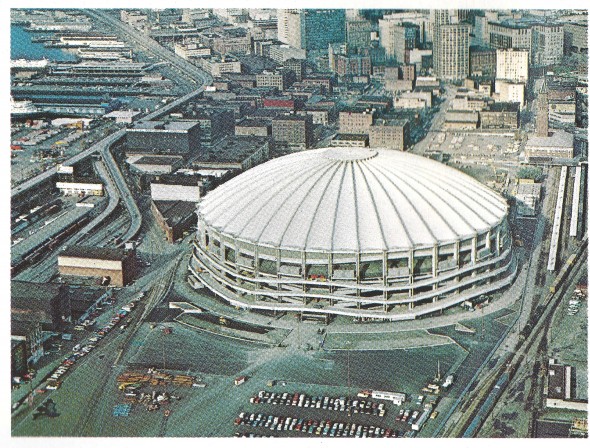
———————————————–
Check out David Eskenazis Wayback Machine Archive. David can be reached at (206) 441-1900, or at seattlesportshistory@gmail.com

5 Comments
David, are the “card” pictures from Pacific’s Largent collection, circa 1988?
Yes, they are!
thanks for the memories!
Maybe you could write something on the SeaHawks death march-like summers in Cheney. I remember hearing that Patera wasn’t letting anyone drink water during practice — which sound absurd when you think about how hot it gets in Eastern Washington. But there was so much secrecy within the organization back then, it was hard to tell what really went on. With so many years having gone by, former players and coaches might be more willing to share some of their stories of their summers in Cheney.
The 1967 Seahawks could have easily beat the 2011 team. Pete is a absolute flop as a pro coach but a great college coach. Isn’t this the first flop for Paul Allen?